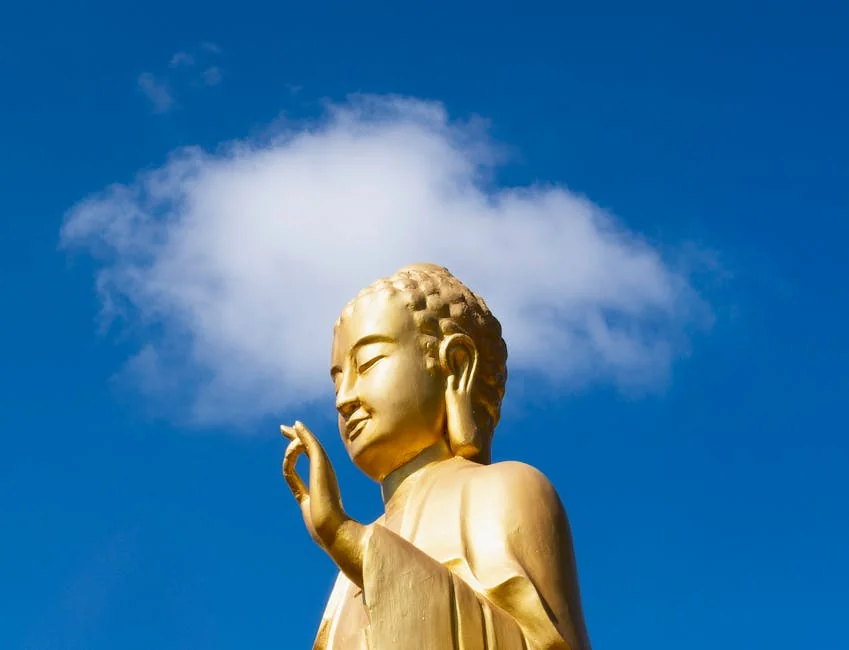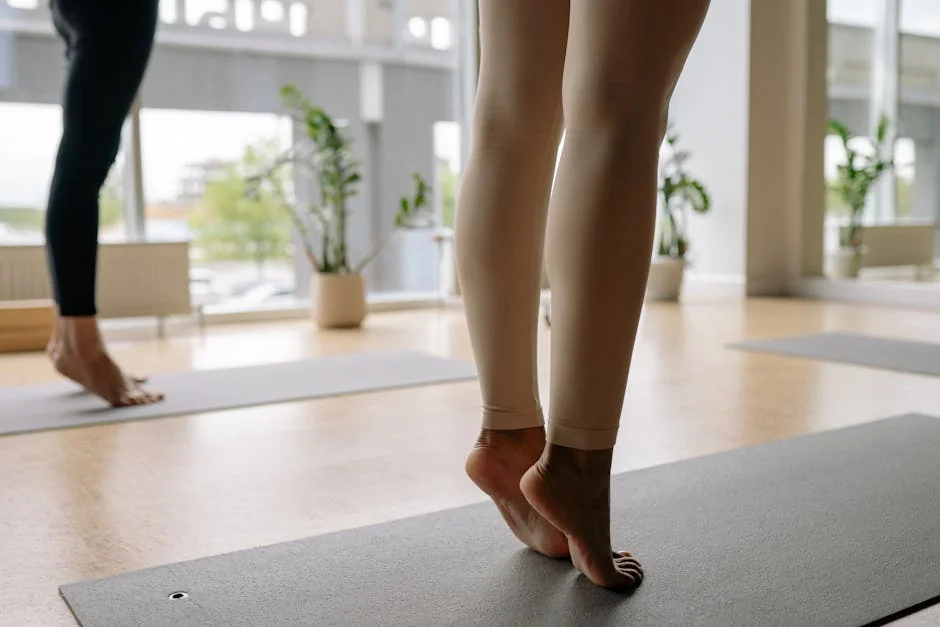You know the feeling: you settle onto your cushion with the best intentions, only to find your mind is a whirlwind of to-do lists and distractions. The initial excitement of your meditation practice has faded, leaving you wondering how to reconnect with the calm and focus you once found. If this sounds familiar, you're not alone. Every meditator, from beginner to expert, encounters periods where their well of motivation runs dry. This is where the quest for genuine meditation inspiration begins.
This article is your guide to rediscovering that spark. We’ll move beyond simple tips and delve into the dynamic sources of inspiration that can transform your practice from a chore into a cherished part of your day. We will explore how to tap into your powerful personal "why," uncover seven fresh sources of daily motivation, and provide practical strategies to overcome an inspiration block. If you're ready to move from feeling stagnant to feeling inspired, read on to rekindle a meditation practice that is both joyful and sustainable.
What is Meditation Inspiration and Why Does It Fade?
Meditation inspiration is not just a fleeting feeling of wanting to meditate. It's the deeper, sustaining force that fuels your commitment. It’s the spark that makes you look forward to your session and the anchor that keeps you returning to the cushion even on busy or difficult days. It’s the difference between practicing out of obligation and practicing out of a genuine desire for connection and growth.
So, why does this crucial inspiration so often disappear? Understanding the "why" is the first step to reclaiming it.
- The Novelty Wears Off: In the beginning, meditation is a new adventure. The brain is stimulated by the novelty. Once it becomes a routine, the initial excitement can dwindle.
- Unrealistic Expectations: Many people start meditation hoping for instant tranquility or a permanently quiet mind. When they encounter the reality of a busy, wandering mind, they can feel discouraged, believing they are "failing."
- Life Gets in the Way: Stressful periods at work, family obligations, or illness can disrupt even the most solid routines. Your practice can feel like the first thing to go when your schedule gets tight.
- Lack of Perceived Progress: Unlike learning a musical instrument where you can hear yourself improve, the benefits of meditation are often subtle and internal. It's easy to miss the gradual changes, leading to the question, "Is this even working?"
- Monotony: Doing the same type of meditation, in the same place, for the same amount of time, can lead to boredom. Your practice can start to feel stale and uninspiring.
Recognizing these roadblocks is normal. They are not signs of a broken practice, but rather invitations to explore and refresh your approach.
Tapping into the Power of "Why": Your Personal Source of Inspiration
Before looking for external sources of inspiration, the most powerful place to look is within. Your personal "why" is the bedrock of a sustainable practice. This isn't a vague concept; it's the core reason you decided to meditate in the first place.
Reconnecting with your "why" transforms meditation from a task on your to-do list into a meaningful ritual. Ask yourself:
- What was I seeking when I started? Was it relief from anxiety? Better sleep? More patience with my children? A greater sense of purpose?
- How do I feel on the days I meditate versus the days I don't? More centered? Less reactive? More compassionate?
- What is one challenge in my life that meditation directly helps me manage?
Take a moment to write down your answers. Be brutally honest. If your initial "why" was to reduce work-related stress, that is a powerful and valid anchor. When you feel your inspiration waning, return to this written statement. Remind yourself of the tangible benefits you are cultivating. This internal compass is your most reliable guide, ensuring your practice remains personally relevant and deeply motivating.
Seven Dynamic Sources for Daily Meditation Inspiration
While your "why" is the foundation, sometimes you need fresh streams of inspiration to keep the practice vibrant. Here are seven dynamic sources to explore.
Finding Inspiration in Guided Meditations and Apps
If your solo practice feels lonely or directionless, guided meditations can be a game-changer. They provide structure, a soothing voice to lead you, and a sense of shared experience.
- Explore Different Teachers: Every teacher has a unique style. Try meditations from various guides—some are more instructional, while others are more poetic or silence-based.
- Dive into Specific Themes: Use apps or online libraries to find meditations tailored to your current needs, such as "Anxiety Release," "Loving-Kindness," "Focus for Work," or "Sleep." This direct application to your life can be highly inspiring. For example, a feel good meditation can be a powerful tool to intentionally shift your emotional state.
- Leverage Technology: Apps often include features like timers, ambient sounds, and progress trackers, which can add a fresh, engaging layer to your routine.
Drawing Inspiration from Nature and Sound
You don't need to sit in complete silence. The natural world is a profound meditation teacher and a rich source of sensory inspiration.
- Practice Outdoors: Take your cushion to the park, your backyard, or even just sit by an open window. Meditate with the feeling of the sun on your skin and the sound of the wind in the trees.
- Use Nature Sounds: Incorporate recordings of rain, ocean waves, or a forest stream. These sounds can help anchor your attention and create a deeply calming atmosphere.
- Try Sound Baths or Binaural Beats: For a different experience, explore sound meditations using singing bowls or binaural beats. These can facilitate deep states of relaxation and provide a novel point of focus.
The Inspirational Power of a Dedicated Space
Your environment has a significant impact on your mindset. Creating a small, dedicated space for meditation signals to your brain that it's time to shift gears.
- Keep it Simple: Your space doesn't need to be large. A corner of a room with a comfortable cushion, a soft blanket, and perhaps a candle or a meaningful object (a stone, a crystal, a small plant) is all you need.
- Make it Inviting: The goal is to create a place you want to be. Ensure it's clean, uncluttered, and has pleasant lighting. This act of creating a sacred, personal sanctuary can be incredibly inspiring in itself.
Learning from Teachers and Communities
Inspiration can be found in the wisdom and support of others. Connecting with a community reminds you that you are not on this journey alone.
- Read Books or Listen to Talks: Dive into the works of meditation teachers like Thich Nhat Hanh, Pema Chödrön, or Jack Kornfield. Their insights can provide profound new perspectives on your practice.
- Join a Local or Online Group: Sitting with a group, even virtually, creates a powerful collective energy. It provides accountability and the shared experience can rekindle your own enthusiasm.
- Attend a Workshop or Retreat: Immersing yourself in a dedicated learning environment, even for a single day, can provide a massive boost of inspiration and deepen your understanding of the practice.
Using Inspirational Quotes and Mantras
Words have power. A short, potent phrase can serve as a powerful anchor for your mind during meditation and throughout your day.
- Choose a Meaningful Mantra: This could be a traditional Sanskrit mantra like "Om" or "So Hum," or a simple English phrase like "I am calm" or "Let it be."
- Select a Weekly Quote: Find an inspirational quote about presence, peace, or compassion. Use it as your focal point for the week, repeating it gently during your sits and reflecting on its meaning.
- Place Visual Reminders: Write your chosen mantra or quote on a sticky note and place it on your mirror or computer monitor. This turns daily life into an extension of your practice.
Finding Focus through Different Meditation Techniques
Boredom often stems from repetition. The world of meditation is vast and diverse—exploring it can reignite your curiosity.
- Switch Your Technique: If you always do breath-focused meditation, try a body scan, a walking meditation, or a loving-kindness (Metta) practice. Learning about traditional meditation can also open up a world of time-tested techniques.
- Experiment with Length: Instead of a rigid 20-minute session, try a few short 5-minute "drop-in" sessions throughout the day, or one longer 30-minute session on the weekend. Variety can keep your mind engaged. If you're curious about a specific time commitment, you can read about one person's twenty minutes meditation journey.
- Challenge Yourself: Gently challenge yourself to sit for just five more breaths when you feel like stopping. These small victories build mental resilience and confidence.
Tracking Your Progress for Motivational Wins
Because the benefits of meditation are subtle, making them visible can be highly inspiring.
- Keep a Simple Journal: After each session, jot down one or two words about how you felt—"calm," "restless," "sleepy," "grateful." Over time, you'll see a pattern of growth and better understand your own mind.
- Note Off-the-Cushion Benefits: Pay attention to moments in your daily life where you see your practice paying off. Did you pause before reacting in anger? Did you feel less anxious in a meeting? Acknowledge these as direct wins from your practice.
Overcoming the Inspiration Block: Practical Tips for Consistency
Even with all these sources, there will be days when you hit a wall. An inspiration block feels solid, but it is permeable. Here’s how to move through it.
- Lower the Bar Dramatically: The biggest hurdle is often starting. On a low-motivation day, give yourself permission to sit for just one minute. Often, once you begin, you'll feel like continuing. If not, you still kept your commitment.
- Embrace the "Bad" Sits: Release the expectation that every session must be peaceful. A meditation where you feel restless and distracted is not a failure; it is a session where you are building the muscle of awareness amidst difficulty. This shift in perspective is liberating.
- Change Your Routine: Meditate at a different time of day. Try a walking meditation instead of a sitting one. Sit in a different chair. A small change can disrupt the cycle of monotony.
- Practice Self-Compassion: Berating yourself for missing a session or feeling uninspired only creates more resistance. Talk to yourself kindly, as you would to a friend. "It's okay that you're struggling to find motivation today. Let's just try one minute."
Building an Inspired and Sustainable Meditation Habit
Ultimately, inspiration is the spark, but habit is the fuel that keeps the fire burning. The goal is to weave your practice into the fabric of your life so seamlessly that it becomes as natural as brushing your teeth.
- Anchor Your Practice: Link your meditation to an existing habit. For example, "After I pour my morning coffee, I will meditate for five minutes." This "habit stacking" makes it easier to remember and execute.
- Focus on Consistency, Not Perfection: It is far better to meditate for five minutes every day than for an hour once a month. Consistency builds neural pathways and reinforces the habit loop.
- Regularly Revisit Your "Why": Make it a monthly ritual to read the "why" statement you wrote earlier. Your reasons may evolve over time, and so should your connection to them.
- Schedule It: Treat your meditation time like an important, non-negotiable meeting with yourself. Put it in your calendar and honor that commitment.
Conclusion: Your Journey of Continuous Meditation Inspiration
The path of meditation is not a straight line to perpetual peace; it is a spiral journey of deepening understanding. There will be peaks of profound inspiration and valleys where motivation seems distant. This is all part of the process.
True meditation inspiration is not a finite resource you find once and hold onto forever. It is a skill you cultivate. It’s about learning to see the extraordinary in the ordinary—the rhythm of your breath, the sensation of the air, the quiet space between thoughts. By tapping into your personal "why," exploring diverse sources of motivation, and meeting yourself with compassion, you build a practice that is resilient, adaptable, and deeply your own. Hearing about another's meditation experience can often provide that final nudge of motivation to begin again.
Let this be your invitation to approach your practice not as a duty, but as an ongoing exploration. Return to these sources whenever you feel your spark dimming. Your journey of continuous inspiration starts not with a perfect meditation, but with the simple, courageous decision to sit down once more and begin again.
Ultimately, the journey of meditation is a journey back to yourself—a practical and accessible path to greater peace, clarity, and resilience. This exploration has underscored that inspiration is not a prerequisite for practice but a natural consequence of it. By starting small, embracing consistency over perfection, and exploring various techniques, you build a sustainable habit that weathers the fluctuations of daily life. The true power of meditation lies not in achieving a perfectly empty mind, but in learning to observe your thoughts with compassion and returning to the present moment, again and again. This simple, repeated act strengthens your capacity to navigate challenges with greater calm and intention. Let this be your invitation to move from inspiration to action. Begin today, even for just a few minutes, and trust that each breath taken in awareness is a step toward a more centered and inspired life. Your practice is waiting for you.



